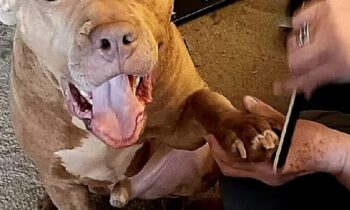
You are looking for a safe place to leave your dog during the day when you will not be at home. You’re hoping for a good place, too, where your dog will be comfortable and happy. You understand how important it is that you choose the right place for your dog. You want to do your due-diligence.
Where do you start?
▪ How far do you want to travel?
▪ How often do you want to go?
▪ What days/hours do you need?
You may look farther afield if you’re planning to take your dog there only one day a week, but if you’ll be driving there five days a week, consider travel time and winter and other seasonal weather.
If you work nights, weekends, and/or long hours, check drop-off and pick-up times, too, and days of operation.
What services do you want in addition to daycare?
▪ Do you want to board your dog at the same facility when you travel?
▪ Do you want grooming, nail trims, bathe-your-own dog set-ups?
▪ Do you want behavior consultations, on-premises training, or classes where you handle your own dog?
Look online for businesses within an acceptable traveling distance and with the hours and services that you need. Ask for recommendations from your veterinarian, groomer, training-class instructor, friends, and neighbors. Check with your local Better Business Bureau, animal control agency, and “best of” listings in local newspapers and magazines for your area, to see how businesses have been rated.
▪ Read all the reviews you can find.
▪ Make a list of your top possibilities.
▪ Drive by each business to observe.
Reading reviews and driving by each business both serve the purpose of giving you a first impression of the daycares you have already pre-qualified as offering a location, hours, and services you want.
Reviews may tell you not to waste your time at a particular business (if there’s not a single good one) but more likely, they’ll give you a good idea of what to ask about and what to watch for when you visit the business in person.
Driving by may also tell you enough that you choose not to visit that daycare in person, for what may be a variety of reasons. If nothing else, you’ll have an accurate estimate of how long it takes you to get there.


Photo by Shelly Keel
Visit each business in person, without your dog.
I asked dog professionals what they’d look for in a good dog daycare.
Carol McPherson (Wyoming) For me, it would be a facility that conducted comprehensive interviews before agreeing to take a dog into their care. A facility that was set up for safety, and an appropriate ratio of caretakers to dogs.
Abigail Witthauer (Alabama) Small playgroups with a solid staff-to-dog ratio (1:15 is the high end of ideal for me). Playgroups separated by size and play style. A facility that can readily explain to you what makes an ideal playgroup dog. What happens when a dog doesn’t seem to be enjoying playgroup and what that looks like. What happens when a dog performs inappropriate behavior or interactions in playgroup.
Jules Weber (Maryland) No collars. Only naked dogs. Breaks and down time between play. Good behaviors encouraged. Understanding of canine body language to stop issues before they start. Multiple appropriate rooms (puppy, small, shy, big, older dogs, etc.) for play. Doing a thorough intake interview of both owner and dog with a trial day.
Anna Abney (South Carolina) Don’t expect a tour first thing in the morning when the staff are cleaning and feeding and walking dogs, but most boarding facilities should have times during the day when they permit tours. They should not, however, allow the public to interact with any dogs that are not theirs. I look for a cattery that is entirely separate from the dog kennels so as not to excessively stress the cats. I also want to see some sign that the employees are knowledgeable about basic dog behavior, and something like a fear-free certification for the facility.
Steven Cogswell (Colorado) [I’d be uncomfortable] if they don’t have a rigorous assessment of dogs before accepting them. I really like Noble Beast Dog Training, and I know they have a daycare program, but I’ve not used it. So I went to their page, and the daycare page was the most involved of the entire site. They don’t allow drop-ins, you have to commit to a recurring day of the week—the prerequisites are extensive. They want to know the dogs pretty darn well before they will take on the responsibility of caring for them.
https://noblebeastdogtraining.com/the-chamapgne-room/
Amy Fumetti (Washington) Quality places have an open-door policy and allow you to see their entire facility, even employee-only spots. All dogs should have a temperament evaluation prior to being accepted for care. All staff should be trained to observe and modify dog behavior before it escalates into problem behavior. The place should be relatively clean at all times. There shouldn’t be lingering odors of urine or feces in the facility and dogs shouldn’t return home smelling of either.
Lastly, but probably more importantly, there should be a high staff-to-dog ratio at all times. Many facilities operate with one staff member being solely responsible for the care of 30 to 120 dogs at a time. This is extremely unsafe. A suitable staff-to-dog ratio is closer to 1:15 (staff to dogs). We have the ability to put all dogs away in private suites to accommodate walk-through tours. We make behavior plans for dogs who misbehave, although it rarely happens due to our extensive evaluation process. When it does, if it continues to occur with a plan in place, we ask that the dog not return and offer the family in-home pet care as an alternative. We never excuse dogs for displaying appropriate warnings. All of our staff are trained in the observation of dog body language. We have a 22,000-square-foot play space for dogs and will never have more than 50 dogs in our facility.
Janet Galante (Arizona) We have cameras everywhere. In order to “see everything” [in person] people would have to walk through the playrooms, putting our dogs at enormous risk. Many of our dogs have stranger-danger [reactions]. We have created a safe environment for these dogs. I refuse to jeopardize the well-being of the dogs in my care because someone needs to satisfy their curiosity. If someone walks into our calm, very quiet play spaces, they disrupt that which we have worked very, very hard to create. And that would go on all day long. We have live feeds in our lobby and in the office. We have six cameras available online. People can watch us all day. And they do!
If watching our eight cameras is not enough, potential clients may come after hours or prior to classes to see our play floors and training rooms. Our clients care deeply that the care and well-being of their dogs is paramount. We make behavior plans for dogs who behave in a manner inconsistent with our expectations. Any dog who behaves aggressively toward another dog or a person is removed from daycare immediately and training services are offered. We monitor behavior and strive to intervene before there is a problem. If we have an issue, we replay our videos from our many cameras and debrief. We do not automatically excuse a dog for displaying an appropriate warning. Instead, we look at what we could have done better. When we excuse a dog, we explain the reasons clearly to the owner and offer solutions.
I was on the committee that establish guidelines still used today for dog daycares. And although dog-to-staff ratios are important, space is equally important. I wish I had data, but 18 years of observation suggests that crowding causes stress and stress causes anxiety and behavior issues. We also recommended 75 to 100 square feet per large dog and 35 square feet per small dog. Stuffing 90 dogs and six handlers in 3,000 square feed is a recipe for disaster. We recommended that small dogs have separate play areas. The guidelines we wrote need to be revisited to address the appropriate training of staff as well as hygiene and management practices.
Terry Hill Cunningham (West Virginia) There’s a dog daycare in West Virginia that hires only people who have taken the service-dog training class at WVU. West Virginia University has classes in service-dog training where students are helping train dogs for veterans. It is a popular class. The program is called Hearts of Gold. There is the first class, an advanced canine education class, and there are spots for graduate assistants to teach classes. In the first class, there is a handler’s test that comes with photo ID that says you are a certified handler for Hearts of Gold. It’s not a certification for anything else. Just for that program. The daycare hires these students. The professor went to Bergin College of Canine Studies and has a master’s in applied behavioral analysis and a Ph.D. from Animal Sciences. The junior trainer has worked with her for seven years and is also excellent. The students use “How Dogs Learn” for their text book and do lab for the hands-on training part.
While we may not all find a dog daycare where the staff is as well-trained as the Hearts of Gold handlers, we can agree on the importance of all staffers’ being as well-educated as possible.
Don’t be afraid to inquire of each business you visit about which staff member(s) will be interacting with your dog and what their experience with dogs and dog behavior has been.
Ask the owner or manager with whom you speak to explain what the business’s dog-training and dog-handling philosophies are. If you don’t like what you hear, cross that business off your list—especially if punishment is practiced by the staff.
Next week, we’ll talk more about dog daycares . . . and how to recognize red flags there!



